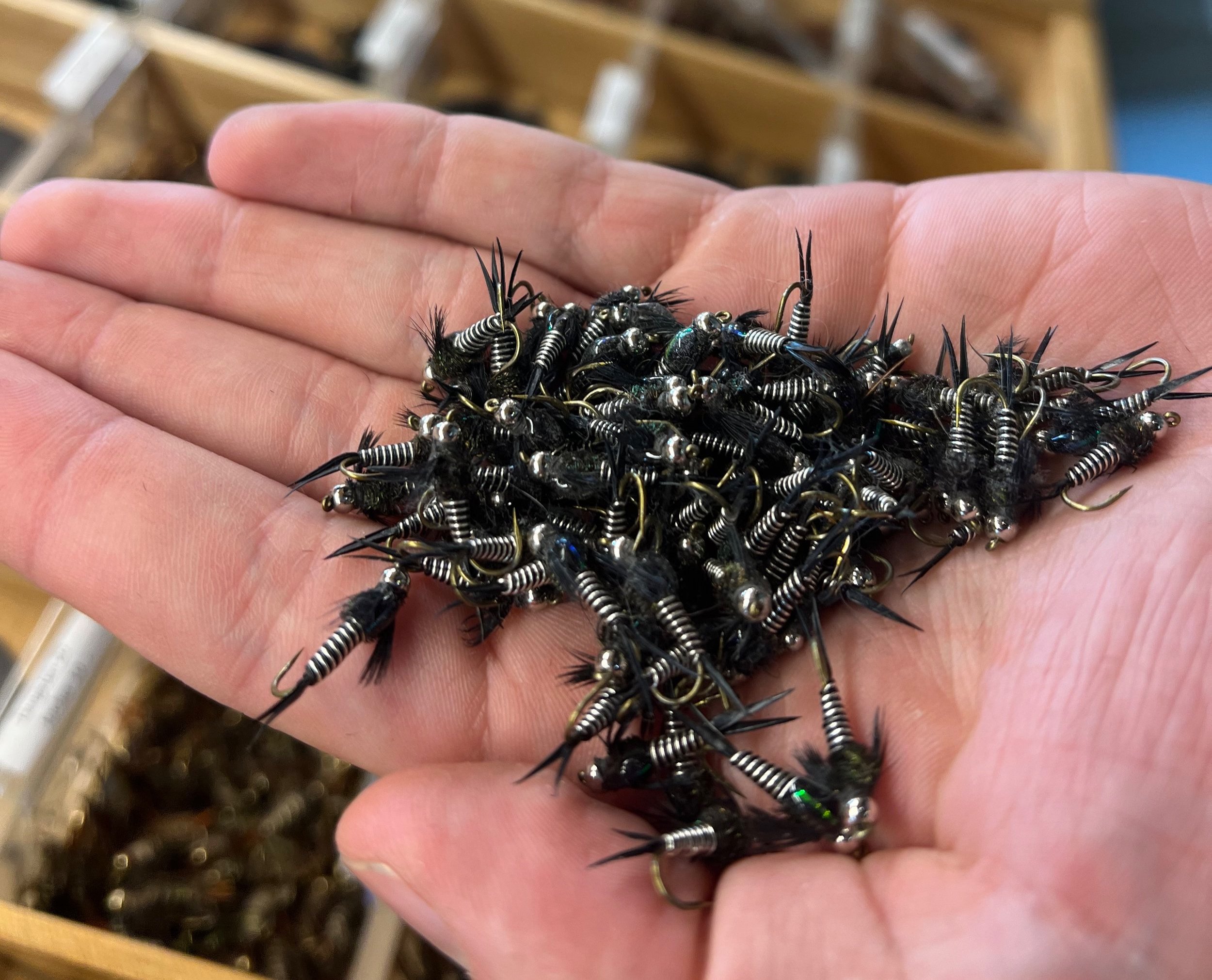Fly Fishing Made Easy: The 1-2-3’s of Choosing the Perfect Fly
Ah, the age-old question every fly fisher asks themselves on the river: “What fly should I use today?” It sounds simple, right? But the moment you step into a fly shop or browse online, you’re met with a dizzying array of patterns and an avalanche of new terms—mayflies, midges, caddis, stoneflies, scuds, sculpin… it’s like learning a new language!
But fear not, fellow angler! We’re here to break it down with the 1-2-3’s of picking a fly. By the end of this, you’ll know exactly what flies you need in your box, why you need them, and how to use them to catch more fish. Lets go……
1. Know Your Bug Types and Food Sources
In fly fishing, we’re essentially fooling fish with a fake snack—an artificial fly. These flies are hand-tied using materials like feathers, fur, foam, and other natural or synthetic bits to try and mimic the bugs in the water. Unlike live bait, these flies don’t have scent or taste, so we need to make them look and behave like something fish would want to eat.
For trout (though the same principles apply to other fish), the majority of their diet comes from aquatic insects. The big four are mayflies, caddis, stoneflies, and midges. These bugs live most of their lives in the water, usually at the bottom of the river, before they decide it’s time to grow up, leave the basement, and venture to the water’s surface to become adults.
But aquatic insects aren’t the only thing on a trout’s menu. They also snack on terrestrial bugs like grasshoppers, beetles, and ants that get blown into the water during the mid summer months . Add to that freshwater crustaceans like scuds, and even smaller fish, crayfish, and leeches, and you’ve got a pretty varied diet.
2. Match the Fly Type to the Food Source
Now that you know what’s on the menu, it’s time to talk about fly types. Just like you wouldn’t bring a knife to a gunfight, you don’t want to bring the wrong fly to a feeding frenzy. The food sources trout eat can be found below the water, near the surface, or on top of the water. To match these, we have four fly types: nymphs, streamers, emergers, and dry flies.
Nymphs: These imitate bugs in their larval stage, crawling around at the bottom of the river. They’re perfect for when there’s not much bug activity on the surface or when the water is colder or deeper.
Streamers: Streamers mimic larger meals like smaller fish, leeches, or crayfish. They’re great for targeting big fish, especially in low light, murky water, or high water conditions.
Emergers: These flies imitate bugs that are on their way to the surface to become adults. They’re useful when fish are feeding just below the surface, making subtle rises.
Dry Flies: These float on top of the water, mimicking adult aquatic insects or terrestrial bugs. Use these when fish are actively feeding on the surface, usually during warmer months when bug activity is high.
3. Observe the Environment and Adapt
Here’s where things get a bit trickier. Just because you had success with a certain fly last week doesn’t mean it’ll work today. The river conditions, bug activity, and fish behavior are always changing. So, how do you know which fly to tie on?
Start by observing the environment:
No Bugs, No Problem: If you don’t see any bugs flying around or fish rising, it’s likely time to go subsurface with a nymph or streamer. Fish are always eating below the surface, so when in doubt, start there.
Low Light or High Water: These conditions are prime for streamers. Big fish often lurk in these conditions, waiting for a large, protein-packed meal to come their way.
Active Hatches: If you see bugs hatching and fish rising, it’s time to break out the dry flies or emergers. Look closely at how the fish are rising—if they’re just breaking the surface with their fins or tails, they’re likely feeding on emergers. If they’re splashing around and you see noses breaking the water, tie on a dry fly.
And there you have it—the 1-2-3’s of picking a fly. With this simple approach, you’ll spend less time stressing over your fly box and more time enjoying the water, catching fish, and maybe even teaching your fellow anglers a thing or two.
As always thanks for Reading and we will catch you on the next ones





